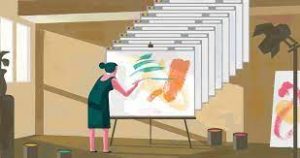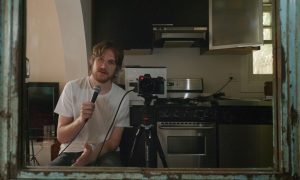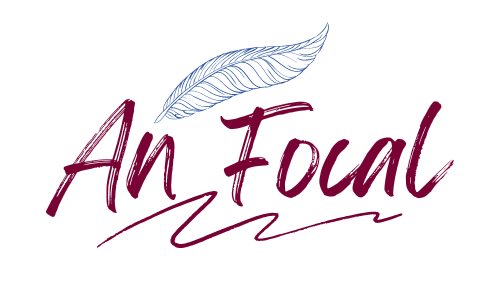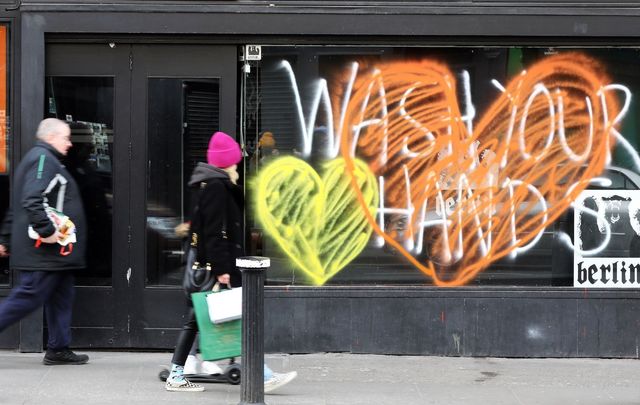It has been a long and exhausting year and a half.
On a personal level, even if you’ve had the luck not to lose anyone to the virus, or contract it yourself, spending so long under a Groundhog Day of isolation would drive anyone’s mental health into the mud.
Even on a grander more sociological scale, we’ve been faced with a disturbing reckoning of our place in the world- for those of us around my age, too young to remember the Cold War or 9/11, this is our first real demonstration that the comfortable life we enjoy in developed nations is little more than a house of cards, ready to topple at the slightest disturbance.
Yes, we’ll all come out of this pandemic a little bit more traumatised than we were in 2019- but how do we process events like the pandemic? Some might just bottle it up forever, others will protest and rage, but many will turn to creativity and art.
So how have artists taken the pandemic?
I wouldn’t say many of them have done well for themselves. After all, one of the most defining features of art created during the pandemic is just how little of it there is.
Anything involving collaboration had to be shelved during the pandemic. From the smallest of local bands to the biggest of blockbusters, creation ground to a halt as interpersonal contact was outlawed.

Even artists that don’t need to collaborate like painters, writers or solo musicians, had very little means of sharing their work with others, almost exclusively limited to the internet.
Art, like almost everything else, was deemed non-essential by governments across the world, and yet in many cases it was almost like art was considered the least essential of the nonessential- it was illegal to play live music in pubs for nearly three months after pubs reopened, and many music festivals like Electric Picnic and Glastonbury were cancelled even though they could have legally gone ahead.
Several protests took place throughout the summer of 2021 demanding clarity on when the arts sector could return to business as usual while tens of thousands packed into stadiums across Europe and Ireland for Euro 2020 and the All-Ireland Championship.
Of course, it’s not just Irish artists feeling the pinch- a survey by Americans for the Arts found that 64% of artists in the USA were fully unemployed in the first lockdown, with 92% experiencing any loss in income.
There’s no getting around it- the arts have been devastated by the pandemic, arguably more so than any other sector of society.
It will take years for the live arts industry to recover to pre-pandemic levels, but that’s not considering all the lost talent from people giving up and finding new careers during the pandemic to support themselves.
But of the art that was produced during the pandemic? With the majority of conventional ways to produce, display or perform art shuttered, new artistic mediums were explored, half out of necessity and half out of genuine artistic curiosity- seeing how the limited means of communication we still had could be used for something greater.
The first and most obvious candidate was the now-despised Zoom call. While the idea of a film revolving around online video chat had existed before, in 2016’s horror film Unfriended, the idea became common place in the early stages of the pandemic.
Sitcoms like Parks and Recreation and Community filmed reunion episodes over Zoom, plays were written and performed over the platform.
As the novelty of Zoom wore off, however, people seemed to move on from the idea. It’s a platform that feels socially awkward to use, as most people surely know by now, and it serves as a symbol of the pandemic era.

Artistic mediums shifted again, and became a little bit more conventional. Playwrights began harking back to the days of radio plays- last year, UL Drama Society produced four audio plays, and even the Royal Shakespeare Company converted productions past and present into audio experiences.
The controversial technology behind NFTs rose to prominence during the pandemic, claiming to be a way for artists to maintain ownership of their work in the now fully virtual market while getting a better deal on selling it, before quickly devolving into a method of money laundering through crude drawings of monkeys.
Ultimately, I think the most iconic example of distinct pandemic-influenced art is Bo Burnham’s Inside, a half comedy-special half-musical released on Netflix on June of this year.
Written, composed and directed entirely by Burnham during the height of lockdown, it’s a genuinely introspective and heartfelt work, inspired and made possible by the enforced isolation we endured throughout the course of the last two years.

Despite the setbacks of recent weeks, it still seems like we’re approaching the end of the pandemic- so what next for the arts?
Things could go either way. Small, independent artists were crushed by the weight of public health restrictions and won’t recover for years, while corporations have gotten right back into the swing of things.
Maybe the pandemic has served as a catalyst, speeding up the death of independent art by creating an environment where the only viable artistic endeavours are those backed by big bucks.
Perhaps the opposite will happen- the absence of live music, theatre, and exhibitions has made all our hearts grow collectively fonder.
It’s not impossible- historians doubt the Renaissance could have happened without the earth-shattering cultural shift caused by the Black Plague, so perhaps history could repeat itself, and the arts could be rejuvenated and more in demand and respected than ever in the post-Covid-19 world.
Someday, we’ll have the gift of hindsight- we’ll look back on what was produced in the pandemic era and remember what it was like to live in total isolation from others, and we’ll be able to properly pinpoint the effects of the pandemic on the arts that came after it, but for now, get out there and support local artists.
They need it now more than ever.
![]()


